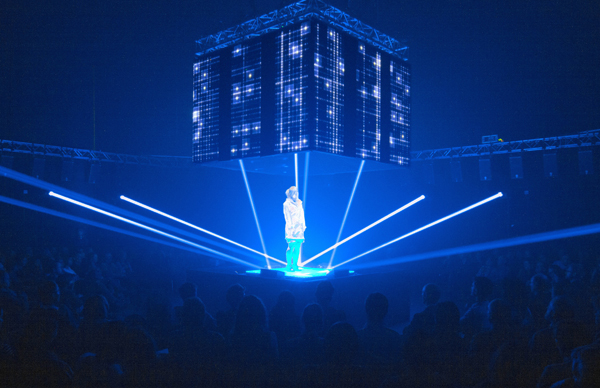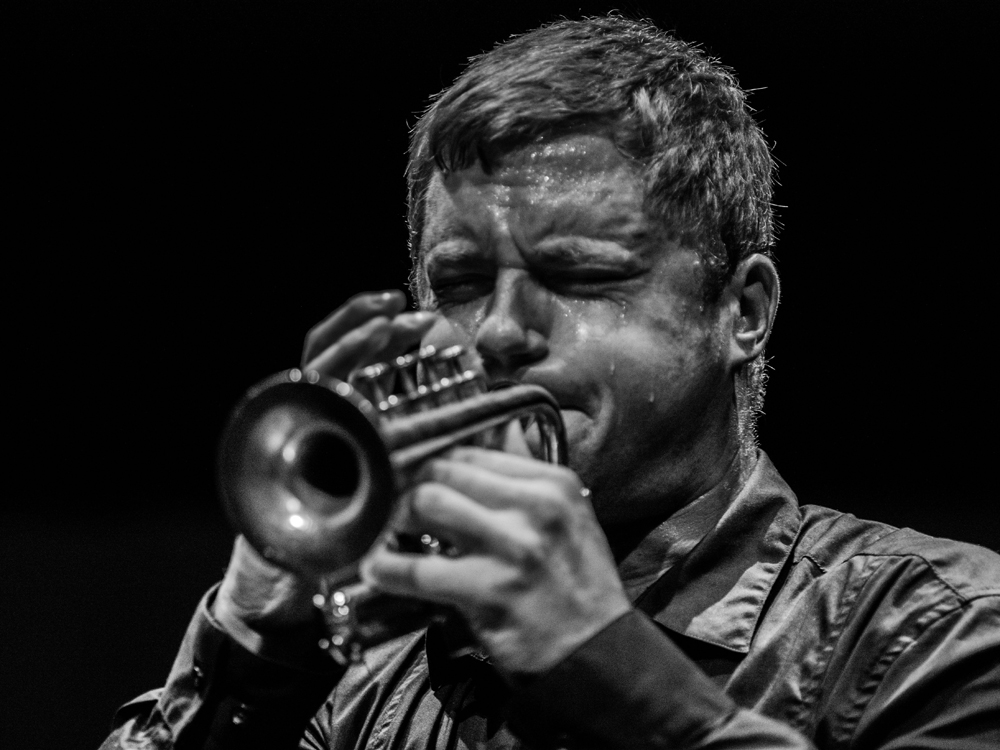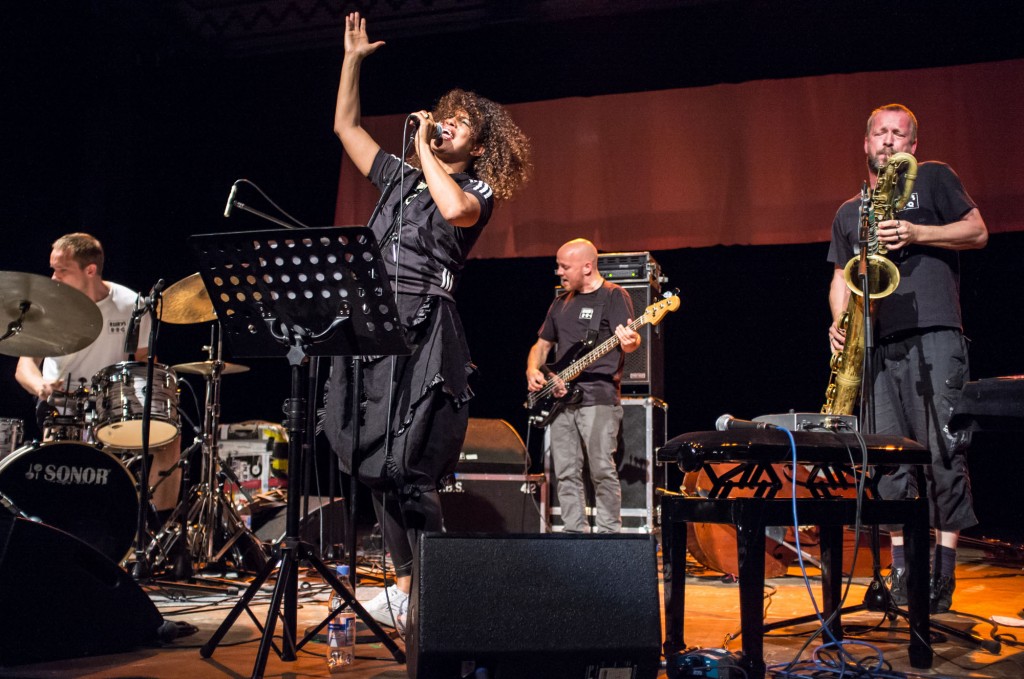By Rebecca Schmid
The motto of this year’s Bachfest Leipzig, “…ein neues Lied” (a new song), could not be a more fitting choice to honor J.S. Bach’s legacy in the city where he spent his final 27 years as cantor. Upon arriving in 1723, he set out to write a cantata every week, enlisting as scribes his second wife, Anna Magdalena, and students who were trained at the Schola Thomana. Now buried beneath a bronze plaque at the foot of the altar in the St. Thomas Church, Bach—or at least his presumed remains which were exhumed from a former cemetery and transported in 1949—continues to infuse local practices with his spirit. The St. Thomas Boys Choir, celebrating its 800th anniversary this year, has commissioned new music for six major religious occasions and included some of Europe’s most seminal contemporary composers: Hans Werner Henze, Heinz Holliger and Krzysztof Penderecki will have all premiered works in the church by January of next year.
At a concert yesterday, the Bachfest (June 7-17) reprised Easter music by St. Thomas Cantor Georg Christoph Biller and Henze’s Pentecost music alongside two Bach works from the Leipzig period. Pentecost, a holiday of tremendous weight for practicing Christians in Europe, officially took place late last month and celebrates the descent of the Holy Spirit upon the Apostles. Henze, a self-avowed atheist, and his librettist Christian Lehnert take a spiritually inquisitive approach in An den Wind for chorus and orchestra. The chaos of unharnessed natural forces and human doubt yield to the promise of peace: “the dove will wake, its wings,/caught by the gusts, no longer will repose,” begins the final chorus after a solo violin emerges from the dust of a desert storm. Henze references Bach with a direct but unfinished quote “Jesu, meine Freu…” to ominous woodwinds and harp plucks in the first section, while wild counterpoint and a percussion interlude after Simon the Zealot’s proclamation of a burning wasteland recall the dramatic tension of his opera Phaedra (2007), another collaboration with Lehnert.
Henze often separates the high and low voices of the St. Thomas Choir and aligns them with according instrumentation: ethereal celeste, piano clusters and sustained chords accompany the pure timbre of boy sopranos while changed voices are underscored by low strings and woodwinds. Unaccompanied moments such as the Disciple’s urging to “call out…so softly that no one shall hear us but the wind” take on deceptively liturgical importance, yet the orchestra thwarts any sense of resolution, such as the gong crash after the mysterious harmonies of the chorus asking God for immortal strength or the rambling piano and bassoon blast following the sopranos’ quote from the Lutheran Bible, “Peace I leave with you, my peace I give unto you….” The Holy Ghost’s powers of salvation transcend earthly strife to restore the natural world—“a wing’s beat, a wind, a simple breath”—bringing the choir together against a billowing atmospheric chord. Biller led the choir and members of the Gewandhaus Orchestra in an intense, precise performance that clocked in at 20 minutes on the mark.
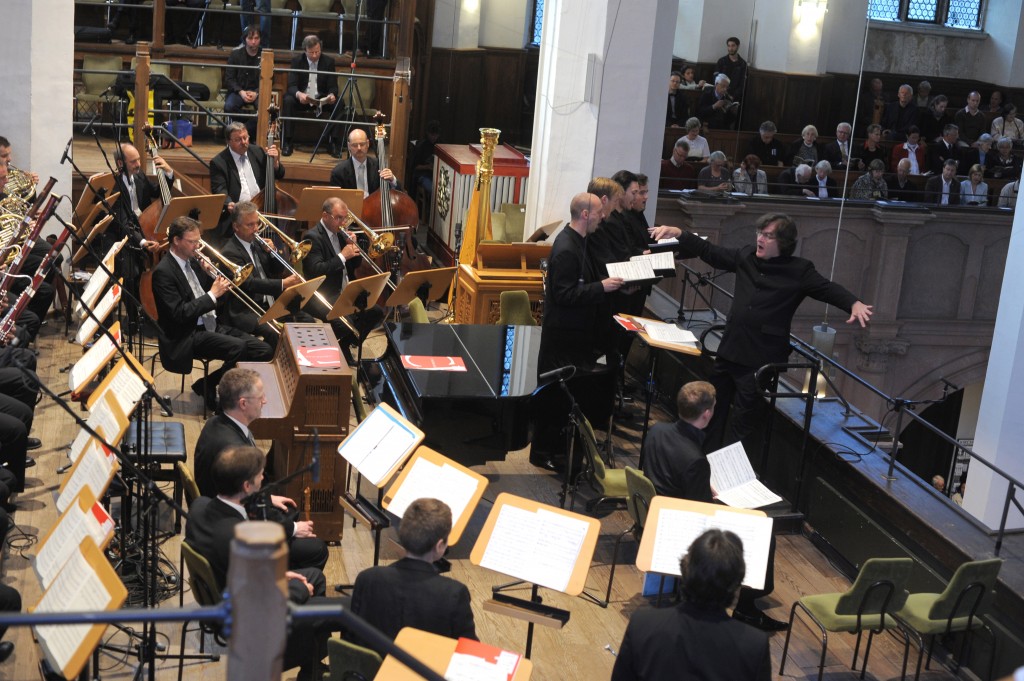
Biller conducting at the St. Thomas Church © Bach-Archiv Leipzig / Gert Mothes: Bachfest Leipzig 2012
The cantor, in his St.-Thomas-Ostermusik, takes a more pious approach, using light-dark imagery to represent the ascent of Christ with direct allusions to Bach’s Passions. Biller himself devised the text for his cantata (also 20 minutes) based on Bible passages and originally composed verse. The opening features a sustained Wagnerian-like minor chord that is punctuated by trombones, only to yield to serenading recorders before the chorus rejoices in this “Easter day! Away with care and sorrow!” Cluster harmonies reminiscent of modern American choral music bring a progressive, optimistic air, while a recurrent rising, whole-tone wind motive and quasi-liturgical structure ground the work in a decisively western European tradition. Some members of the audience sang the descant of the Bavarian/Austrian hymn “Christ is arisen” while the boy sopranos crooned into the stratosphere, a transcendent passage that culminated in the clang of trumpet and chimes. Although the work may have its hokey moments for non-church goers, Biller manages to straddle contemporary developments in religious music with a clear reverence for the St. Thomas tradition. Alongside the immaculately trained choir, tenor Martin Lattke gave a fervent performance as the Evangelist.
Between the two newly commissioned works, Bach’s Ascension Oratorio (BWV 11) transported the audience back to the heyday of cantatas as the Gewandhaus musicians and boys’ choir performed with irreproachable authenticity under Biller. As the program notes explain, the work was written only six months after the Christmas Oratorio and features liberal borrowing from Bach’s earlier works, yet any such knowledge hardly impedes upon the music’s fresh exuberance as the trumpets open the work with a life-affirming proclamation. The ensemble’s sense of pace was particularly striking in the cadence of the opening chorus “Lobet Gott in Seinen Reichen,” and the Gewandhaus players’ flowing but restrained body movement made it clear that they have this music in their bones. The fragile, glassy timbre of a boy soprano in the aria “Jesus, deine Gnadenblicke” further evoked the original spirit of the work while the woodwinds accompanied in sensitive counterpoint. Closing the program was the motet “Der Geist hilft under Schwachheit auf” (BWV 226), performed at the burial of a St. Thomas headmaster in 1729. The music does not mourn but expresses gratitude to “the Spirit” for helping mortals through their weakness. A quiet penitence prevailed beneath the painted vaults of the St. Thomas Church.
Note to interested listeners: the St. Thomas Choir, for its 800th anniversary, has released a compilation of live performances featuring works by Bach, Mozart, Mendelssohn and others on the label Rondeau Productions.
Back on the (non-denominational) scene in Berlin…
The Mahler Chamber Orchestra (MCO) and the alternative arts space Radialsystem teamed up last weekend for their second Radiale Nacht, a rotating program of orchestral and chamber works featuring choreography by Sasha Waltz, live remixes and an after show. The format, scattered between the main hall, the lounge area, and the upstairs deck, exploits the ample space of the converted water pumping plant and creates a relaxed atmosphere in which musicians mingle casually with the audience. Guest artists Pablo Heras-Casado and Colin Jacobsen roamed between the bar and patio overlooking the Spree River before the concert, while one orchestral player dressed in black was mistaken for an onsite employee. The event was first launched in November with sponsorship by the pharmaceutical company Aventis in an effort to provide a Berlin base for the MCO, founded in 1997 as a touring ensemble with offices in the German capital. Radialsystem Intendant Jochen Sandig and MCO Intendant Andreas Richter hope to further cement the relationship despite the fact that they were denied city funding; Sandig reported in conversation that the local government is currently losing half a billion Euro over the delayed launch of the new airport.
Tense cultural politics aside, the energy was high as the youthful members of the MCO took the stage with Jacobsen as concert master under the direction of Heras-Casado. The mostly Russian program, seen June 9, opened in the main hall with Alisa Weilerstein in Shostakovich’s First Cello Concerto, a tour de force whose ferocity and emotional complexity the 30-year-old conveys with intuitive grace. She moved seamlessly between growling harmonics and whining melodies, shaping every passage with spontaneity and forward-moving inertia as she plunged into the depths of Shostakovich’s despair and rage. The cellist maintained irreproachable beauty of tone throughout the entire rage of her instrument in the Cadenza, which moves cautiously from a slow lament and into wild disillusion. She was matched well by the strings’ sinuous phrasing under Jacobsen and lean, buoyant textures that emerged through Heras-Casado’s economical but commanding gestures, although the tone could have been angrier in the final Allegro movement. As an encore, Weilerstein offered a fast movement from Bach’s Cello Suites, whose spritely baroque character was somewhat of a sudden palate cleanser to the edgy textures of the previous work.
Upstairs on the deck, she and Jacobsen joined with two members of the MCO for a very Berlinified rendition of Shostakovich’s Eight String Quartet featuring live remixes by the DJ Georg Conrad. Jacobsen’s bright, smooth tone led the group through the searing canonic development of the opening Largo—whose main theme is drawn from the First Cello Concerto, while Weilerstein’s fierce playing found a spotlight in the following Allegro molto. Then, in an unexpected twist, the musicians rested their bows as an interlude of house music whirred through the speakers. One can’t deny that the dance beats were well suited to the views of graffitied industrial buildings across the Spree, yet it was quite awkward to watch the quartet sit onstage without playing. While Jacobsen and other audience members started nodding their heads in rhythm, it might have been more organic to have the musicians improvise over the DJ: the connection to Shostakovich’s musical content was otherwise more than spurious. The effect was no less jarring when Conrad’s atmospheric grooves returned a second time after a violin solo during the penultimate Largo movement. The quartet otherwise formed a well-balanced whole, especially considering that they had only rehearsed the set-up that day.
The program retained its progressive flair with an excerpt from Sasha Waltz’s choreographed concert “gefaltet,” a Mozarteum commission originally unveiled earlier this season. The Divertimento in E-flat, as re-experienced at the Radiale Nacht, features a quartet of dancers in mock-ballet movements that range from sweeping, eloquently neo-baroque to angular, tick-like gestures while a trio plays at the corner of the stage. Waltz is strongest when she captures the sensuousness and symmetry of Mozart’s music, while less congruent attempts to stamp the music with a post-modern sensibility are less effective for this viewer. Sandig’s subsequent scenic arrangement of the Schnittke pastiche Moz-Art à la Haydn also incorporated dancers of Sasha Waltz & Guests in “structured improvisation” to mirror the aleatoric demands of the score, which riffs on a theme by Mozart into polytonal madness. In keeping with Schnittke’s original suggestions for blocking, the dancers begin in darkness along the aisles of the main hall before clustering with the dancers in a swarm onstage and running back to their original places. Heras-Casado was spotlighted toward the middle of a piece as a buffoon-like caricature of a conductor, waving his arms only for the sake of imposing control, only to be upstaged by a child dancer-turned-maestro with as commanding a head of curls.
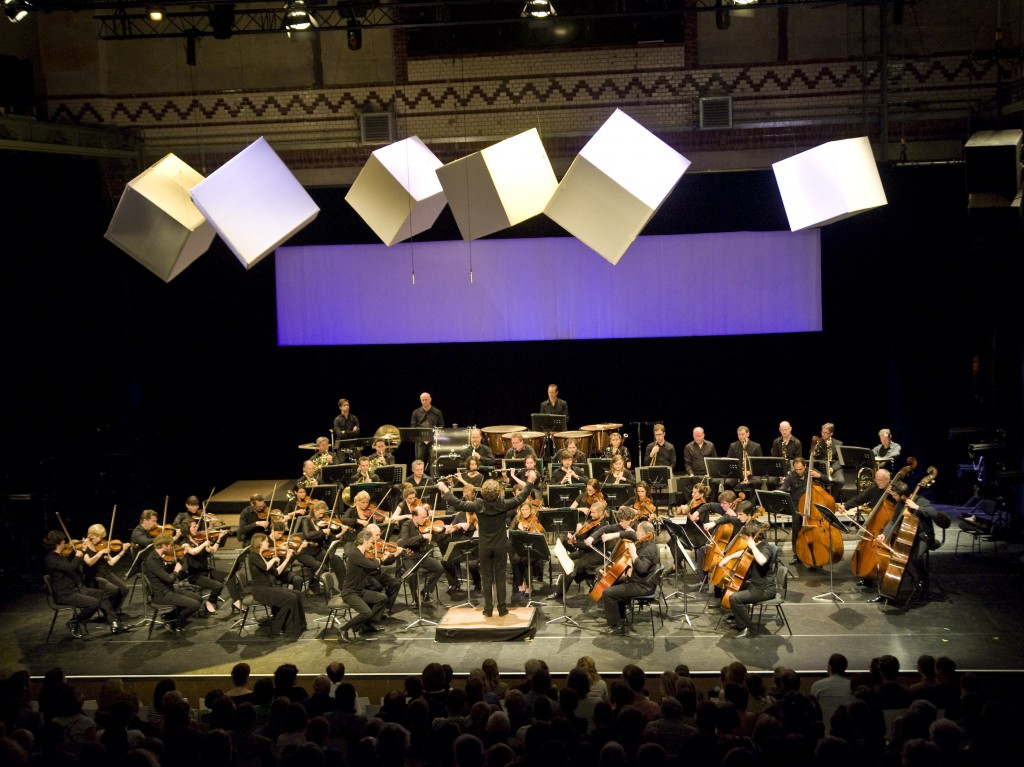
Heras-Casado conducts the MCO (c) Holger Talinski
The official program closed with Shostakovich’s Ninth Symphony, considered the most neo-classical of his fifteen symphonies in its neat structure and cheerful character, although this is thoroughly tongue in cheek. The symphony was written at the end of World War Two in 1945, upon which Stalin accorded himself personal credit for the defeat of Germany. The dictator was not deaf to the satirical military allusions in this symphony, and announced soon thereafter that his regime could now find time to take appropriate measures toward art that so blatantly challenged his authority. The MCO’s spirited playing did full service to the music’s irony, knit together with fiery attacks under Heras-Casado, while wind solos emerged with confidence. Shostakovich’s writing for the bassoon is particularly prominent in this work, with its humorous melodies in final Allegretto that steer the orchestra away from triumph. The music continued in the lounge outside with Jacobsen’s chamber arrangements of works by Astrud Gilberto and others. The quintet, which included Weilerstein at the cello, was clearly having a great time jamming to samba and tango beats, and the audience rewarded them with wine-imbibed cheers.
![my_brightest_diamond[1]](http://www.musicalamerica.com/mablogs/wp-content/uploads/2013/12/my_brightest_diamond1-150x150.jpg)
